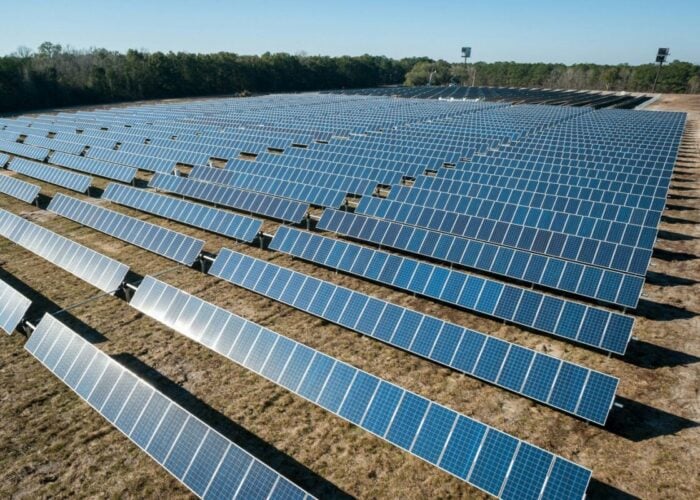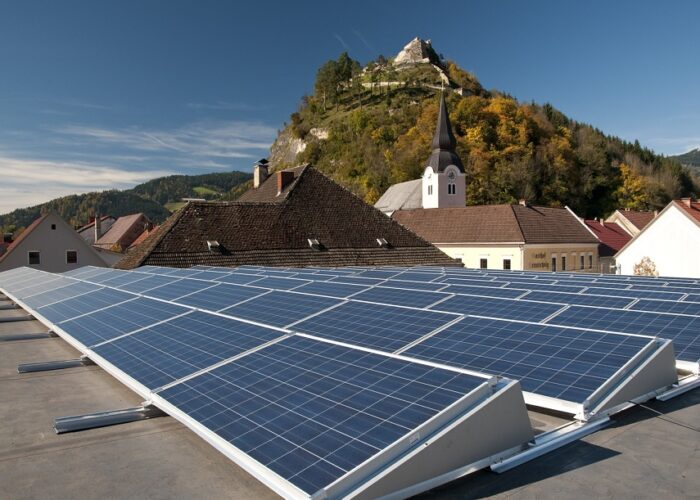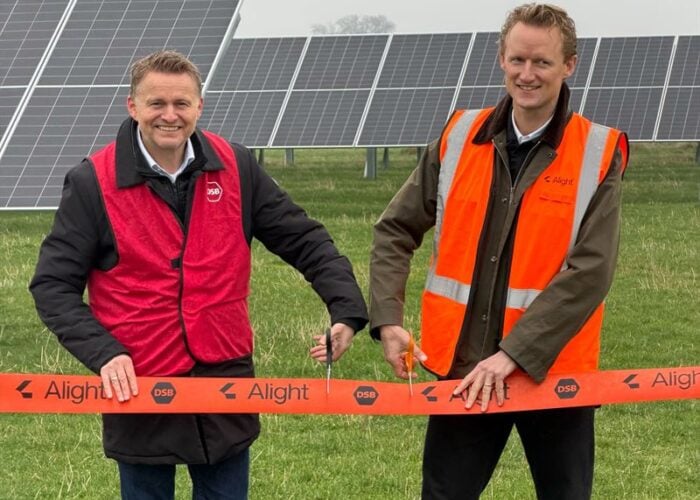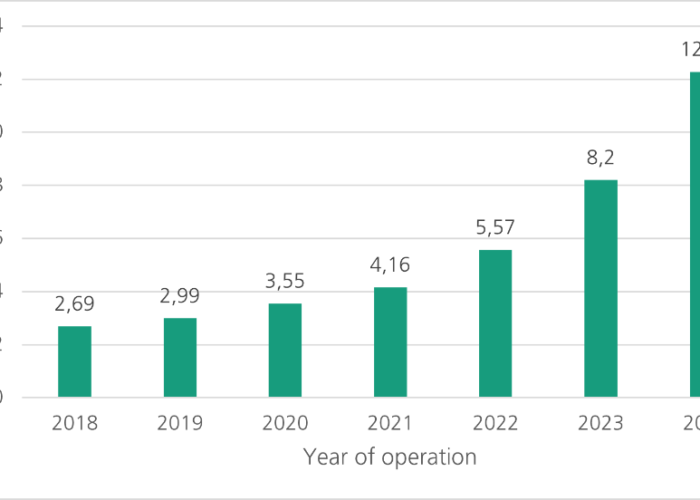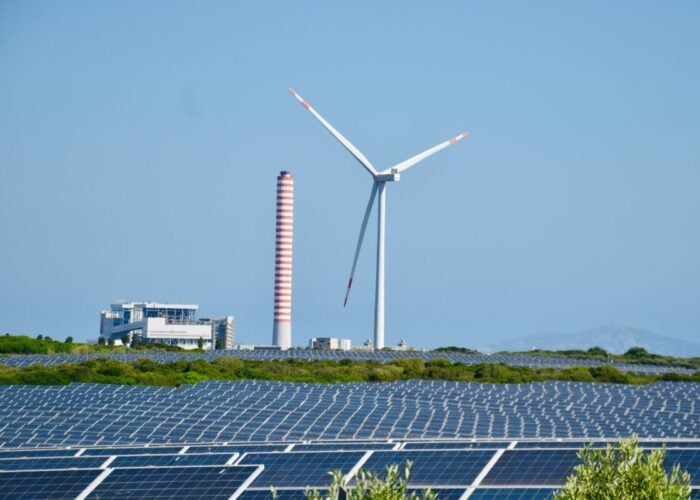
Ahead of next week’s Large Scale Solar EU virtual summit, PV Tech speaks to Carlos Magistris, senior technical manager Europe at JinkoSolar Europe, to explore some of the key themes surrounding solar module reliability and performance.
Try Premium for just $1
- Full premium access for the first month at only $1
- Converts to an annual rate after 30 days unless cancelled
- Cancel anytime during the trial period
Premium Benefits
- Expert industry analysis and interviews
- Digital access to PV Tech Power journal
- Exclusive event discounts
Or get the full Premium subscription right away
Or continue reading this article for free
Module quality and, perhaps more importantly, reliability have become prominent themes for solar R&D of late, what steps have module manufacturers like JinkoSolar taken to improve this?
In terms of quality standards, by adopting multi-busbar (MBB) circular ribbon technology we have increased the stability and reliability of the cell and reduced the mechanical stress avoiding the risk of micro cracks effectively. MBB also decreases the distance between the main busbars, which means decreasing electron transportation distance as well as the current loss.
Round ribbon welding strip can accelerate the usage of the light and improve the low irradiance performance. To be more precise at the manufacturing side the following procedures are applied to avoid micro cracks:
a. Together with the already mentioned Circular Ribbon, our TR technology allows us to control the ribbon thickness of the overlapping area, by upgrading ribbon pressing process, and measuring the ribbon thickness at a regular basis.
b. Straight ribbon before pressing process: Making sure that ribbon maintain straight and its hardness before pressing process, and pressing machine maintains horizontal.
c. Temperature control: Additional AC is added during ribbon pressing process, strictly control the pressing temperature, to make sure it ‘sit is lower than the melt point of Tin.
Finally, the heat conduction between the cells using Tilling Ribbon technology is faster than between cell and ribbon. Hence, the heat conduction of the TR modules is more uniform when the hot spots appear. Therefore, the Tiger Pro modules perform better avoiding the problem of hot spots.
What kind of an improvement on project yield are these innovations and R&D advancements having, and what is the impact on project developers?
Jinko’s new ultra- high efficiency modules, Tiger PRO, are based on half-cut cell design to reduce cell current mismatch and ribbon power losses. In addition, Multi Busbar and Tiling Ribbon (TR) technology reduces the distance between the main busbar and finger grid lines, which decreases resistance loss and increases power output and efficiency of the module while maintaining a low (Voc) open circuit voltage.
The low Voc and temperature coefficient (-0.35%) of the module can increase the number of modules at the unit group string level, and if the DC side capacity of the project is known, the total number of strings in the project can be reduced, which increase the power densities. As a result, utility-scale plants can reduce the amount of DC cabling, PV mounting and combiner boxes required, lowering BOS (Balance of System) costs.
In addition, its higher efficiency decreases the area needed for the same peak power, so do the wind and snow loads, which indirectly helps to reduce the cost of fixtures for the mounting system. Other advantages of the Tiger PRO module series include premium new warranty. For Tiger PRO monofacial modules it includes a first-year degradation of no more than 2%, with degradation of no more than 0.55% in the second through 25th year.
One of the more obvious introductions is bifaciality – what do project developers need to be aware of when it comes to considering bifacial panels for their projects?
As bifacial technology establishes itself in the market, costs are likely to fall further to become even more competitive to monofacial, which will have significant impacts on the financial models. Furthermore, rather than a revolutionary technology, bifacial generation sees an incremental improvement as a proven technology, which needs much shorter time to accumulate enough data for modelling validation and bankability metrics.
In general terms, the important aspects to consider are the optimisation of the design and the installation, to avoid shading in the back and to take most of the technology. Then, of course, the choice of the right bifacial technology. An interesting option are the modules with the transparent backsheet option, because they solve most of the flaws of the dual glass technology. For example, transparent backsheet can stand much better the effects of the UV rays that hit the rear side of the modules that the standard double-glass modules. The transparent backsheet modules also solves key issues of dual-glass bifacial modules, hence increasing the potential of the module even further, mainly for large utility-scale projects, where decreased LCOE and improved IRR as well as maximising plant performance are crucial.
Transparent backsheet modules are also more suitable and competitive for the project designs that require lightweight modules. In this way, it is possible to BOS (balance of systems) costs, thanks to the panel’s lighter weight and easier installation method comparable to traditional glass-backsheet, framed modules.
One of the key trends this year has been the introduction of high-power modules with outputs more than 550W. Given the impact on the physical module size/weight and their electrical characteristics, what is the expected impact on project yield?
With the arrival of the grid parity era, the industry has recognised the benefits of deploying high-power modules in large sizes for their ability to reduce the LCOE. However, larger modules sizes come with more technology challenges.
The 182mm modules effectively support the existing industrial specifications and electrical system. The advantages are also mainly driven by the production costs, transportation costs/ limitations and financial project cost analysis.
In terms of the LCOE, 182 seems to be the best option because they provide high levels of generation capacity and reliability, optimal for large-scale ground-mount power plants. When comparing different dimensions of electric cost, BOS cost and IRR, 182mm products are simply a better choice.
From a logistics perspective, the width of a 182mm wafer-based module reaches the size limit of a standard sized container, which has a positive impact on the shipping costs. Finally, the 182mm module is the mainstream sizes product with the highest market share and production capacity forecasted for the incoming years.
The Large Scale Solar EU virtual summit takes place between 24 – 26 November 2020. More details on how to register for the event can be found here.

